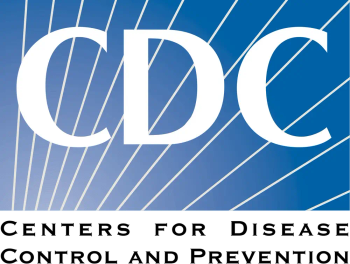
Penicillin-Binding Proteins Reconsidered: A Clinician's Guide from Targets to Dynamic Cell-Wall Control

PBPs are more than static β lactam targets. Host conditions rewire PBP activity and peptidoglycan architecture, shaping tolerance, resistance, and how we design salvage regimens.
Penicillin‑binding proteins (PBPs) are the periplasmic/membrane‑anchored enzymes that build and remodel bacterial peptidoglycan (PG). β-lactam antibiotics interact with PBPs to inhibit these enzymatic processes, primarily during cell division, leading to cell lysis.1 Classic teaching reduces PBPs to a chart of “β-lactam drug ↔ PBP target,” but newer structural and phenotypic work shows PBPs are dynamic control points. PBPs not only coordinate division but also repair wall injury and redirect cross‑linking—behaviors that influence antimicrobial tolerance, set the stage for resistance, and explain why some β‑lactam combinations help in difficult infections. In short: PBPs are not just locks for antibiotic keys; they are architects reacting to the host.2
Three Practice Myths to Retire
Myth 1: “Each β‑lactam hits a single, fixed ‘target PBP.”
Reality: Affinity is distributed and dependent on numerous organism and host conditions as demonstrated through changes related to bacterial growth phase, testing media, and additional host cues that are simulated in vitro. For S. aureus, anti‑staphylococcal β‑lactams saturate native PBPs (eg, show affinity for PBP1/2/3/4). However, MRSA’s PBP2a lowers affinity broadly but can be engaged allosterically (eg, ceftaroline).3
Myth 2: “All ‘low‑affinity PBPs’ behave alike.”
Reality: “Low‑affinity” simply means reduced β‑lactam binding at clinical concentrations; mechanisms differ by lineage. MRSA PBP2a is allosterically regulated (access to the active site changes with ligand binding). By contrast, Clostridioides difficile PBP2 is cephalosporin‑insensitive and contains a Zn‑binding motif linked to redox sensing—biochemically interesting, but without direct bedside utility in the form of an approved adjuvant.4,5
Myth 3: “A treatment failure means ‘a PBP mutation.’”
Reality: Failures can reflect tolerance or ordered multi‑locus remodeling, not a single mutation. In S aureus, serum peptides can trigger PBP4‑dependent wall thickening and daptomycin tolerance, potentially delaying culture clearance; in Streptococcus pneumoniae, clinically relevant amoxicillin resistance often follows stepwise uptake across pbp1a/2b/2x with contributions from murM.6
Therapeutic Considerations
MRSA bacteremia salvage. Observational data consistently suggested faster clearance when vancomycin or daptomycin is paired with a β‑lactam; randomized trials (CAMERA/CAMERA2) did not show mortality benefit and raised nephrotoxicity concerns with broad combination therapy, though time‑to‑clearance signals persist.7-9 PBP4‑mediated remodeling can blunt daptomycin; pairing with a β‑lactam that engages native PBPs/PBP2a can help. Cefoxitin’s PBP4 inhibition is mechanistically intriguing but not standard salvage.3 In practice, many centers favor daptomycin + ceftaroline as a salvage option for persistent MRSA bacteremia, leveraging ceftaroline’s engagement of PBP2a while monitoring renal toxicity and clinical response.7 When you observe serum‑exposed phenotypes (thickened walls, rising MICs/“creep,” or slow killing) likely represented by on-going culture positivity or clinical deterioration, re‑evaluate source control and consider a β‑lactam adjuvant strategy.
MSSA bacteremia. Standard therapy remains a single anti‑staphylococcal β‑lactam (nafcillin/oxacillin or cefazolin). However, there have been published cases suggesting synergy between cefazolin or nafcillin/oxacillin and other β-lactams, namely ertapenem, in reducing time to blood clearance in bacteremia as well as endocarditis.10-12 Routine β‑lactam “double coverage” is still not established; reserve salvage combinations for select, persistent cases after source control and PK/PD optimization are addressed.
Enterococcus as proof of PBP logic. Various case-cohort, retrospective, and controlled trials reviewing E faecalis endocarditis have compared the traditional ampicillin and aminoglycoside combination treatment verses the combination of ampicillin with ceftriaxone and shown similar clinical outcomes, including one-year mortality and adverse effects, with some suggesting decreased nephrotoxicity with the β-lactam combination regimen. E faecalis endocarditis responds to ampicillin + ceftriaxone (saturating complementary PBPs) despite innate cephalosporin resistance—an everyday example that PBP saturation patterns, not single targets, can guide therapy.13
Pneumococcus and stepwise resistance. Serial β‑lactam failures in S pneumoniae may reflect ordered PBP changes rather than a single event.6 When failure occurs, escalate thoughtfully (higher‑affinity agents, optimized dosing) and reassess source; avoid rotating across similar cephalosporins without a plan.
C difficile: interesting, not actionable (yet). Zn‑linked/redox tuning of PBP2 helps explain cephalosporin insensitivity and sporulation biology. Clinically, this reinforces reducing cephalosporin pressure as a stewardship measure; specific “adjuvants” which may target this mechanism are investigational.7
Knowledge of the complex interactions between β-lactam antibiotics and PBPs, and how those interactions lead to bacterial death or even resistance, is still mostly viewed in vitro with clinicians relying on creative, investigational therapeutic combinations to overcome refractory infections. Further understanding of how PBP inhibition, especially broad PBP structure inhibition, may one day lead to newer drug adjuvants beyond just additional antibiotics to help clear related infections.
The Society of Infectious Diseases Pharmacists (SIDP) is an association of pharmacists and other allied healthcare professionals who are committed to promoting the appropriate use of antimicrobial agents and supporting practice, teaching, and research in infectious diseases. We aim to advance infectious diseases pharmacy and lead antimicrobial stewardship in order to optimize the care of patients. To learn more about SIDP, visit
References
1.Bertonha AF, Silva CCL, Shirakawa KT, Trindade DM, Dessen A. Penicillin-binding protein (PBP) inhibitor development: A 10-year chemical perspective. Exp Biol Med (Maywood). 2023 Oct;248(19):1657-1670. doi: 10.1177/15353702231208407
2.Wacnik K, Rao VA, Chen X, et al. Penicillin-Binding Protein 1 (PBP1) of Staphylococcus aureus Has Multiple Essential Functions in Cell Division. mBio. 2022;13(4):e00669-22. doi:10.1128/mbio.00669-22
3.Ledger EVK, Massey RC. PBP4 is required for serum-induced cell wall thickening and antibiotic tolerance in Staphylococcus aureus. Antimicrobial Agents and Chemotherapy. 2024;68(11):e00961-24. doi:10.1128/aac.00961-24
4.Young M, Walsh DJ, Masters E, et al. Identification of Staphylococcus aureus Penicillin Binding Protein 4 (PBP4) Inhibitors. Antibiotics. 2022;11(10):1351. doi:10.3390/antibiotics11101351
5.Casey D, Sleator RD. A genomic analysis of osmotolerance in Staphylococcus aureus. Gene. 2021;767:145268. doi:10.1016/j.gene.2020.145268
6.Vigouroux A, Cordier B, Aristov A, et al. Class-A penicillin binding proteins do not contribute to cell shape but repair cell-wall defects. Akhmanova A, Xiao J, Xiao J, Dörr T, eds. eLife. 2020;9:e51998. doi:10.7554/eLife.51998
7.Blackman AL, Rubin EC, Broadbent EK, Brade KD. Updates on Combination Therapy for Methicillin-Resistant Staphylococcus aureus Bacteremia. Curr Infect Dis Rep. 2020;22(10):28. doi:10.1007/s11908-020-00737-8
8.Davis JS, Sud A, O’Sullivan MVN, et al. Combination of Vancomycin and β-Lactam Therapy for Methicillin-Resistant Staphylococcus aureus Bacteremia: A Pilot Multicenter Randomized Controlled Trial. Clinical Infectious Diseases. 2016;62(2):173-180.
9.Tong SYC, Lye DC, Yahav D, et al. Effect of Vancomycin or Daptomycin With vs Without an Antistaphylococcal β-Lactam on Mortality, Bacteremia, Relapse, or Treatment Failure in Patients With MRSA Bacteremia: A Randomized Clinical Trial. JAMA. 2020;323(6):527. doi:10.1001/jama.2020.0103
10. Ulloa ER, Singh KV, Geriak M, Haddad F, Murray BE, Nizet V, Sakoulas G. Cefazolin and Ertapenem Salvage Therapy Rapidly Clears Persistent Methicillin-Susceptible Staphylococcus aureus Bacteremia. Clin Infect Dis. 2020 Sep 12;71(6):1413-1418. doi: 10.1093/cid/ciz995
11. Gilbertie J, Ulloa ER, Daiker JC, Nguyen K, Smelter D, Rose W, Geriak M, Schnabel LV, Nizet V, Sakoulas G. Potent Activity of Ertapenem Plus Cefazolin Within Staphylococcal Biofilms: A Contributing Factor in the Treatment of Methicillin-Susceptible Staphylococcus aureus Endocarditis. Open Forum Infect Dis. 2022 Mar 23;9(5):ofac159. doi: 10.1093/ofid/ofac159
12. Wilsey HA, Pisani B, O'Neill TJ 4th. Oxacillin plus ertapenem rapidly clears persistent left ventricular assist device-related methicillin-susceptible Staphylococcus aureus bacteremia. J Card Surg. 2022 Jul;37(7):2127-2130. doi: 10.1111/jocs.16491
13. Marino A, Munafò A, Zagami A, et al. Ampicillin Plus Ceftriaxone Regimen against Enterococcus faecalis Endocarditis: A Literature Review. J Clin Med. 2021;10(19):4594. Published 2021 Oct 6. doi:10.3390/jcm10194594
Newsletter
Stay ahead of emerging infectious disease threats with expert insights and breaking research. Subscribe now to get updates delivered straight to your inbox.
















































































































































































































































































